Currants are among the most widespread berry crops in Europe. Since the 10th century, they have been cultivated in monastery gardens across the continent. For centuries, people enjoyed these berries straight from the bush, dried them, cooked them, froze them, made tinctures, and used them for medicinal purposes and skincare.
Is it a fruit or a berry? Why are black currants black? Where do they grow, and what varieties exist? This article explores these questions and more.
Table of contents
Types of Currants

Currants are well-studied and documented by botanists, breeders, and gardening enthusiasts. Scientifically, they are berry shrubs from the genus Ribes in the Grossulariaceae family.
Did you know? Gooseberries and various types of currants belong to the same genus.
There are over 190 known species of currants. The most popular, found in nearly every garden and backyard across Europe, are black and red currants.
Even children recognize black currants. A medium-sized, spreading bush reaches 1.5–2 m in height. Shortly after the spring snowmelt, it is covered in tender emerald-green foliage. By early summer, the leaves darken slightly, becoming a rich green, smooth on top and slightly fuzzy underneath.
The shrub blooms in May — early June. The grayish-pink, bell-shaped flowers are arranged in clusters up to 5–10 cm long.

The harvest begins in early July when most berries turn black and soften slightly. The tart-sweet berries, with their distinctive aroma, can reach 1.5 cm in diameter, with a matte or glossy surface depending on the variety. The deep blue-black color comes from pigments called anthocyanins.
Note! Two weeks after ripening, black currants lose up to 70% of their vitamin C content.
Garden or red currants are less common. The bush, up to 2 m tall, is covered with dark green, serrated leaves. Small, inconspicuous yellow-green or reddish-brown flowers form clusters. The bright red, juicy berries, 8–12 mm in diameter, grow in bunches and are smaller and tarter than black currants.
With proper care, a currant bush can produce fruit for at least 10–15 consecutive seasons. Young plants yield large berries with minimal effort in the first few years.
Description and Characteristics of Currants
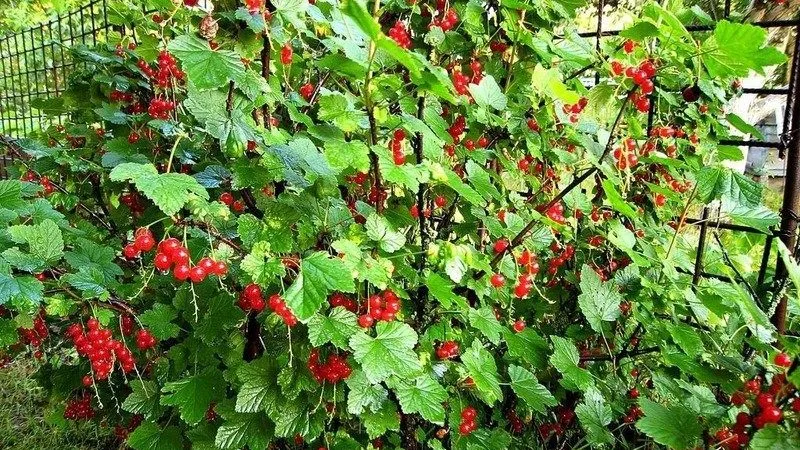
Most currant species are deciduous shrubs. They have a robust root system that extends up to 1.5 m deep. The stems are straight and elongated, with lower branches drooping toward the ground.
The leaves are alternate, with 3–5 lobes. The color intensity depends on the species—the top is usually darker than the underside. Decorative varieties feature unusual foliage colors: red, orange, and crimson, changing throughout the season.
Currant flowers, on fuzzy stalks, rarely exceed 1 cm in length. Inflorescences of several buds form clusters. Most species are monoecious, but some are dioecious, with male and female flowers in separate clusters.
The fruit of the currant is an edible round or oval berry with small seeds, always with a slightly tart taste. Colors range from black and red to golden.
Where Currants Grow
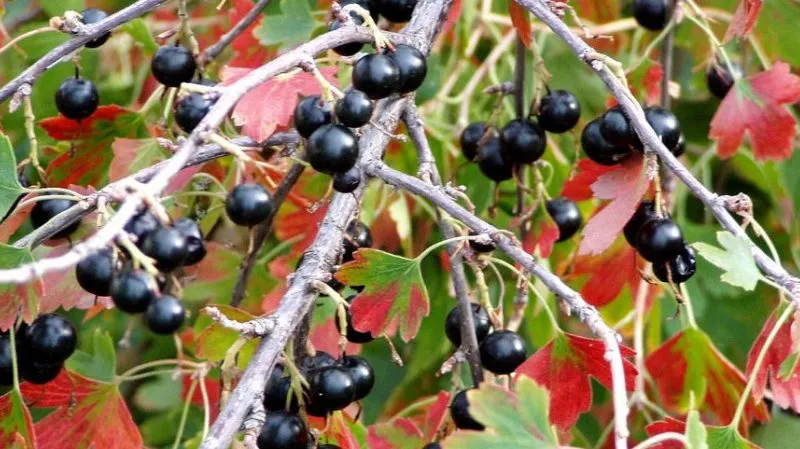
Wild black currants thrive in damp forests, along riverbanks, lakes, and marshes across Eurasia.
Cultivated varieties are grown throughout Europe, parts of Central and Eastern Europe suitable for horticulture, and even in North America. Some black currant species have adapted well to colder climates.
The ideal soil for currants is fertile loam, but they can grow in various soil types—light or dense—as long as the location is fertile and moist.
Note! Red and white currants tolerate drought better than black currants.
Bushes should be planted in open, sunny spots, spaced at least 1 m apart to avoid shading. Without enough sunlight, the berries grow smaller.
Plants in less fertile soil require extra care after 2–3 years. During summer, they need liquid fertilizer to maintain moisture. Simultaneously, the soil should be loosened within 0.5 m of the bush.
Varieties of Currants
Currants are hardy, but for maximum yield, it's best to grow regionally adapted varieties.
For example, Nordic varieties, known for their frost resistance, are ideal for regions with harsh winters, such as Scandinavia and the Alpine regions.
Ben Tirran — a robust, self-pollinating, high-yielding plant that withstands drought, heat, and cold. It thrives in Northern and Central Europe.

Western and Central Europe, with their temperate climates and diverse soils, are well-suited for European-bred varieties.
Black Currants
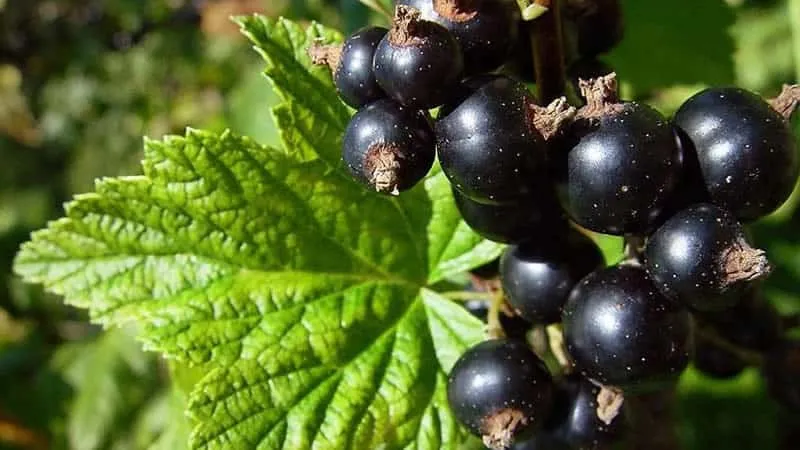
Early-ripening black currants bloom in May and are vulnerable to late frosts. Harvesting begins in late June or early July. The berries have thin skin and a bright flavor, making them ideal for fresh consumption.
Mid-season varieties ripen 2–3 weeks later. The berries are sweeter and denser, perfect for summer desserts. Late-season currants, harvested from late July to mid-August, have thick skin and firm flesh, making them great for preserves.
Popular Varieties:
- Early-season Titania withstands winter temperatures down to -30°C, tolerates drought, and resists anthracnose and powdery mildew. However, it is susceptible to aphids and bud mites, requiring insecticide treatment. Fruiting begins in the second year, with peak yields (5–6 kg per bush) in 3–4 years. The berries are juicy, with a dessert-like sweetness and a hint of tartness.
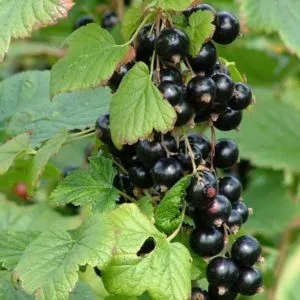
Titania - Mid-season Ben Lomond is frost-resistant, self-pollinating, and resistant to bud mites. Its compact, bright-green bushes are sometimes used ornamentally. Regular pruning is needed to control growth. With proper care, one bush yields up to 4 kg of berries. The sweet-tart flavor is considered one of the best, and the leaves are often used in herbal teas.
- Late-season Öjebyn thrives in cold winters and dry summers. It resists anthracnose and powdery mildew but is vulnerable to bud mites. While self-pollinating, cross-pollination improves yields. Berries ripen unevenly, requiring multiple harvests. Under ideal conditions, yields reach 5 kg per bush. The berries are exceptionally sweet and aromatic, with a classic currant aftertaste.
Red Currants
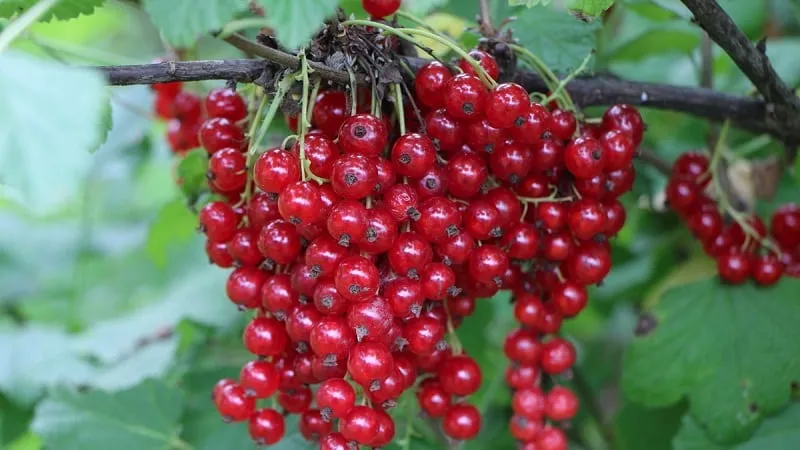
Red currants are less popular than black ones. Gardeners prefer large-fruited, winter-hardy varieties resistant to pests and diseases. Red currants are prone to aphids, powdery mildew, and anthracnose. Thus, resistant varieties are highly valued:
- The mid-early Dutch variety Jonkheer Van Tets is widely grown in Europe. It is hardy, resistant to powdery mildew, and rarely affected by anthracnose or bud mites. Early flowering makes it vulnerable to spring frosts. Berries ripen uniformly, with an average yield of 4–6 kg per bush. The taste is mildly tart.
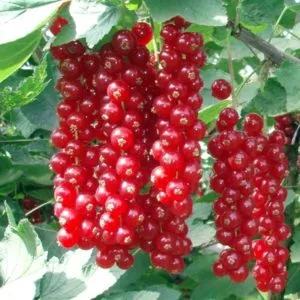
Jonkheer Van Tets - Mid-season Rovada resists diseases and pests. It is self-pollinating, ensuring good yields (8–12 kg per bush) even in poor pollination years. The dense, spreading canopy requires support to prevent branch breakage. The bright red, tart-sweet berries are excellent for preserves.
- Late-season Red Lake is immune to powdery mildew and septoria, moderately susceptible to anthracnose. Late flowering prevents frost damage. Berries ripen unevenly. Loved for high yields (6–10 kg per bush) and a sweet-tart flavor. Taste rating: 4.3/5.
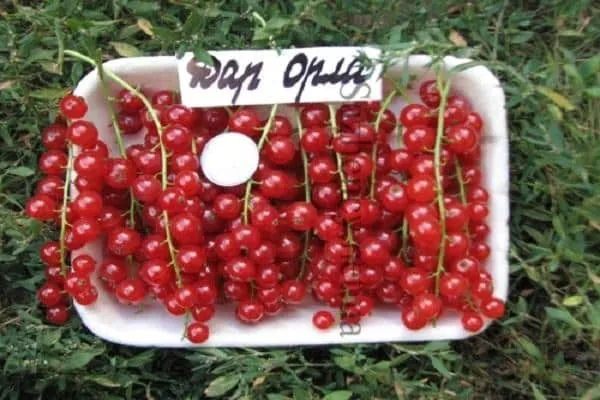
Golden Currants
Golden currants originate from North America. European gardeners often underestimate them, using them as ornamental shrubs. In spring, the bushes are covered in fragrant yellow flowers, sometimes obscuring the leaves.
Interesting! The berries come in stunning colors: black, golden, purple, orange, and pink. In autumn, the foliage turns yellow-red-green, creating a striking display.
This shrub is extremely hardy, thriving in sun or shade, in various soils, and on flat or sloped terrain. It tolerates winter temperatures below -30°C. It rarely suffers from disease and resists pollution and dust:
- Early variety Crandall blooms in May, producing berries by early June. The seedless, heart-shaped, light-crimson berries remain on the branches until August. A single bush can yield up to 10 kg.
- Mid-season variety Golden Jubilee grows well across Europe, yielding 5–8 kg per bush. It is drought- and frost-resistant. Planting in groups improves pollination. The dark berries have a sweet-tart flavor with an unusual floral aroma.
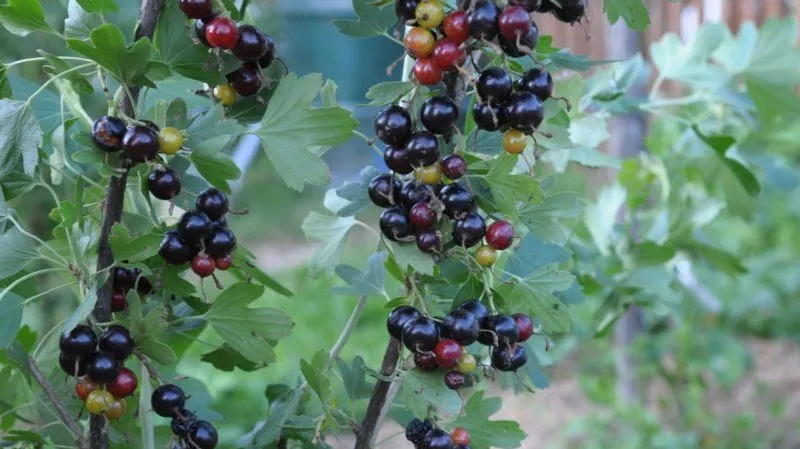
Golden Jubilee - Late-season variety Amber survives snowless winters and resists pests. Berries ripen by mid-August, yielding 5–8 kg per bush. The deep orange-red berries have a classic sweet-tart currant taste.
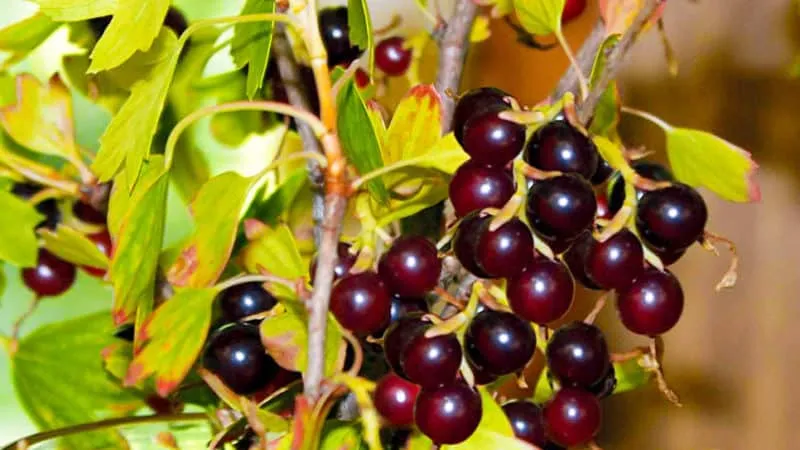
Amber
Conclusion
Currants are nature’s delightful gift. Europeans have long cherished these hardy, vitamin-rich, and flavorful berries. Breeders have developed countless varieties, differing in taste, color, size, and ripening time.
Regionally adapted shrubs thrive across Europe—from the Mediterranean to Scandinavia, from the British Isles to Eastern Europe.







